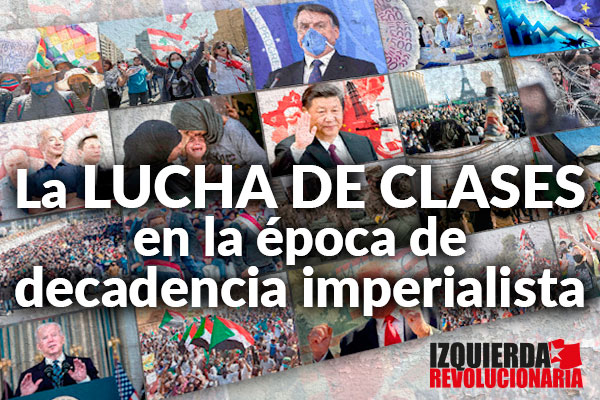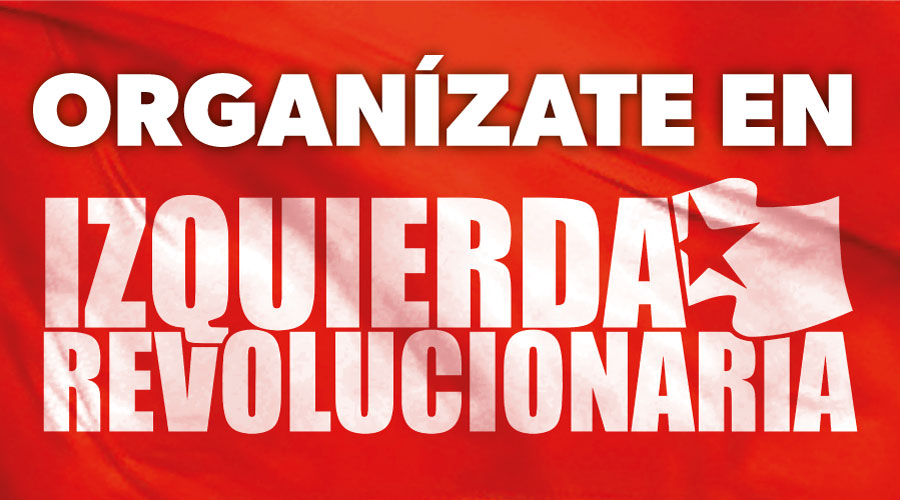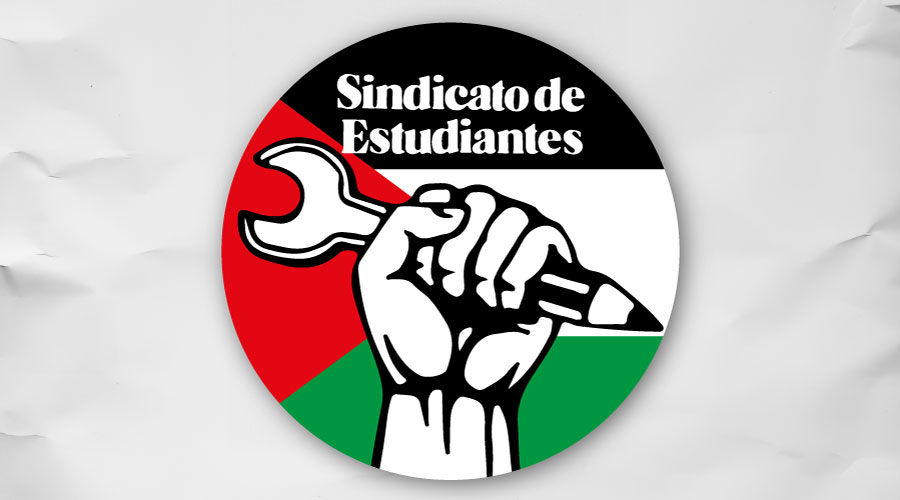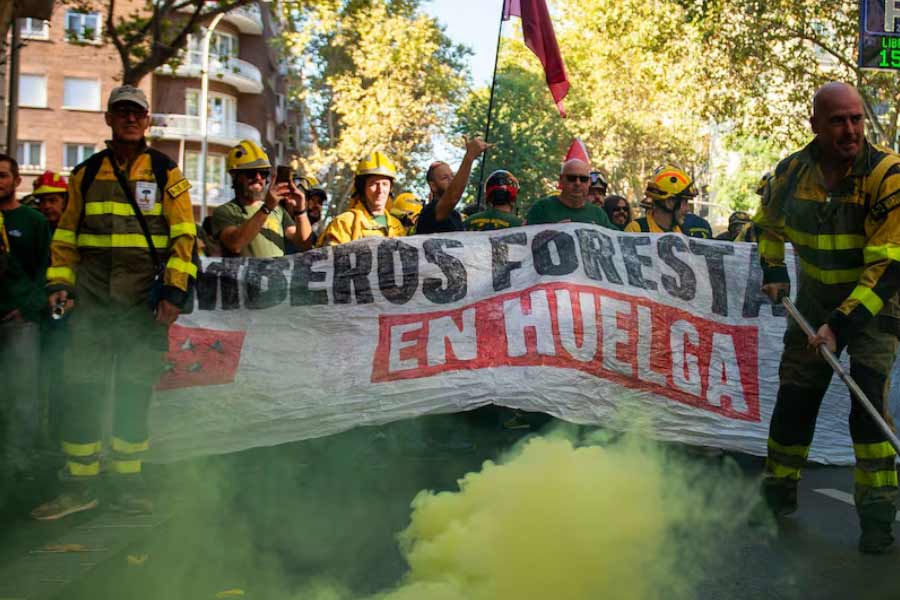The International Revolutionary Left held its second congress on 13 and 14 November. The discussion, which lasted a day and a half, analyzed in depth the major events of the class struggle during the last period: from the popular uprisings and insurrections that have shaken dozens of countries in the last two years, through the social and economic catastrophe unleashed after the outbreak of the pandemic, the change in the correlation of world forces, as well as the rise of the populist extreme right and the failure of the new formations of the reformist left.
The basis of this debate was the World Perspectives document drew up at the beginning of September, which has been discussed and amended in all sections of International Revolutionary Left over the course of two months. We publish in two parts the document adopted unanimously at the congress.
The class struggle in the epoch of imperialist decline
I. the crisis of global capitalism and the struggle for hegemony
The humiliating defeat of US imperialism and its allies in Afghanistan, after twenty years of occupation and nearly 250,000 dead, has exposed to the world public opinion the decadence of the West's main power. Wall Street and the military-industrial complex have made record profits from this war but, taken as a whole, the balance sheet is devastating for their interests. The foreign strategy of the US bourgeoisie after the fall of the USSR - to act as a global policeman with free hand - has reaped failure after failure in the last decade.
Afghanistan is the crowning achievement of a broader process that picked up speed after the Great Recession of 2008. China's rise as a superpower and the spread of its political, diplomatic and military influence is shaping profound and irreversible transformations in international relations. This factor adds to what has happened in the past year and a half, when the pandemic has precipitated a health, social and economic catastrophe unprecedented since the Second World War. The more than five million dead and 216 million infected demonstrate the extreme degeneration of the ruling class and its system.
The productive forces collide with the straightjacket of private ownership of the means of production and of the nation state. The exponential growth of poverty, unemployment, precariousness and overexploitation, unstoppable inequality and climate catastrophe are the price to pay for the stratospheric profits of the global financial plutocracy. Never in history has the gap between rich and poor been so wide.
The dictatorship of finance capital has become omnipresent to such a degree, and the balance of the system has been so obviously upset, that the traditional forms of domination have been severely disrupted. The crisis of bourgeois parliamentarism and the traditional parties of the system, the bankruptcy of the new organisations of the reformist left, the rise of reactionary populism and the extreme right, the widespread attacks on democratic rights are the result of the impasse in society as a whole, just like the chain of social explosions, insurrections and popular uprisings that have shaken numerous countries in the last two years.
China's response to the covid challenge
The development of the productive forces in China over the last three decades, and its peculiar regime of state capitalism, must be studied very carefully. It is a phenomenon that can only be compared to the rise of US imperialism after the First World War - and the displacement of Britain as the dominant power - while at the same time presents specific particularities that make this event unprecedented and original. We will expand on this aspect later.
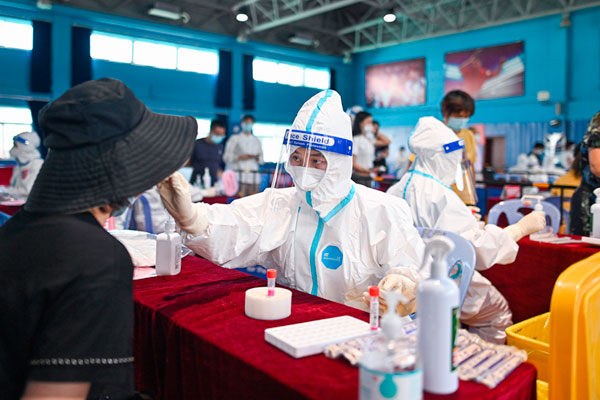
If we compare how both the Beijing regime and the Western ruling class have dealt with the pandemic we have to recognize that the superiority shown by Chinese state capitalism has been overwhelming. An analysis of the official figures is enough to understand the difference: in terms of the number of deaths per 100,000 inhabitants, the US has 400 times the mortality rate of China, while Germany has 200 times.
Covid-19 data (up to 26/8/2021)
|
Deaths |
Diagnosed |
Mortality rate Population 100,000 in |
hab. in millions |
|
|
World |
4,495,014 |
216,026,420 |
not available |
7,700 |
|
USA |
633,564 |
38,384,360 |
191.98 |
330 |
|
China |
4,848 |
106,905 |
0.34 |
1,440 |
|
Germany |
92.108 |
3,923,250 |
110.97 |
83 |
|
Great Britain |
132,465 |
6,659,916 |
197.7 |
67 |
|
Spain |
83,861 |
4,822,320 |
176.92 |
47,4 |
The reserves accumulated by Chinese capitalism have allowed Xi Jinping's bonapartist regime to mobilize a huge amount of resources, controlling and almost eradicating the pandemic. Of course, this momentous event has been censored by the Western media.
When the virus first showed alarming signs, the Chinese government confined the city of Wuhan, with 11 million inhabitants, and shortly afterwards the province of Hubei, with 45 million. French Marxist economist François Chesnais explains: "some 580,000 volunteers from the countryside or other cities were mobilised to help residents meet their needs... Between late January and April [2020] 35,000 doctors arrived in Wuhan, the centre of the epidemic... [and] 12,000 workers to build two special field infection hospitals that treated thousands of people with Covid-19. The Chinese military also sent 340 human teams with a total of thousands of military doctors... the daily need for PPE in Wuhan amounted to 60,000 protective coveralls... China normally produces only 30,000". The government mobilised "state-owned enterprises across the country to speed up existing PPE production and build new production lines... by mid-February, the shortage of PPE was overcome. All health workers wore protective coveralls... genetics and diagnostics company called BGI built the Huo-Yan laboratory in Wuhan in a few days, a fully functional covid-19 diagnostic centre capable of testing tens of thousands of people". (1)
While in the US and Europe covid-19 infections and deaths have become a daily occurrence, without ever completely eradicating the virus, China has knocked down the few resurgences in a matter of weeks.(2) The last one at the end of July, of the Delta variant, was tackled with strict closures and containment, including all transportation, and 100 million tests in a matter of days in each of the affected cities. Technology played an effective role, with "real-time location data from mobile phones" fed into "artificial intelligence servers that calculated the likelihood of new infection outbreaks" .(3)
The Western bourgeoisie and its spokesmen have responded to this by claiming that China is a dictatorship. But American and European-style "democracy", which is supposed to show its social justice, its civilising achievements, its progressive spirit, has enriched the big pharmaceutical monopolies while millions of people have been left to die in neglect. In these democracies, public health care has been devastated. And if we talk about ex-colonial countries under Western influence, such as India, the self-styled "largest democracy in the world", or Bolsonaro's Brazil, the balance sheet is terrifying.(4)
We have no intention of painting an idyllic picture of the CCP-led regime. Even if it wraps itself in a red flag with the hammer and sickle, it represents the interests of the state bureaucracy and the new Chinese bourgeoisie. It is not a workers' state and has nothing to do with socialism, and the capitalist and Bonapartist character of Xi Jinping's presidency is beyond doubt. But to echo Western propaganda is a stupidity.
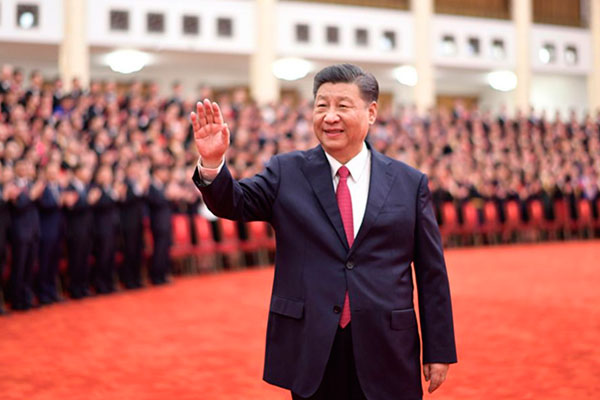
What has made this difference possible? The "effectiveness" of China's anti-pandemic plans is nourished by its gigantic and vigorous productive and commercial development, which are the expression of the advance of productive forces in recent decades. But there is something else, and that something else is really important. The nomenklatura that run the CCP and the state apparatus are not a caste of upstarts. They have been used to controlling the levers of power for decades, and have developed a clear awareness of their interests.
The elements of planning and centralisation in the Chinese economy - inherited from the old deformed workers' state - have an important weight in the current system of state capitalism, giving it a great advantage over its competitors. The pro-capitalist bureaucracy understood, and made the big businessmen understand even by force and coercion, two things. First, that if the pandemic escaped their control, the problem would not be one or two negative quarters, but a long and agonising setback. Second, that it was not prepared to tolerate any capitalist to accumulate so much power in his hands as to threaten the power of the state bureaucracy.
Spectacular growth
China has recorded more than two decades of spectacular growth, while the Western economy has been in recession and stagnation for thirteen years. If, in 2000 China's gross fixed capital formation was estimated at 400 billion dollars, in 2018 it reached 5.5 trillion, surpassing the US record. It is no coincidence that the turning point occurred precisely between 2008 and 2010.
Gross Fixed Capital Formation (Billions of dollars)
|
Year |
China |
US |
China/US Ratio (1) |
|
2000 |
0.4 |
2.4 |
16.7 |
|
2010 |
2.9 |
2.8 |
103.6 |
|
2018 |
5.7 |
4.3 |
132.6 |
(1) China as a percentage of the US total (Source: Indexmundi).
Thanks to this massive capital investment, China became the world's factory and its products flooded every continent. Since 2008 the total value of its exports has never fallen below $1.2 trillion, from 2012 the lower limit was set at over $2.2 trillion, and in 2020, in the year of the pandemic, it has reached a record $2.49 trillion, thus obtaining a record trade surplus of $535.03 billion, the highest in five years! During Trump's presidency, the US trade deficit with China, far from shrinking, increased by 13%, rising by a further 19.2% so far in 2021. In 2020 China was responsible for 30% of global manufacturing output, compared to 18% for the US.
The US has lost its position as the world's banker. China is now a creditor of more than five trillion dollars, a figure equivalent to 6% of world GDP. The Asian giant's share of the total owed to G20 countries by other nations rose from 45% in 2013 to 63% at the end of 2019. China is the largest holder of US debt after Japan.
In 2020, for the first time, China overtook the US as the top destination for Foreign Direct Investment (FDI): while FDI increased by 4% in China, it fell by 49% in the US. Between 2015 and 2020, FDI fell by 71% in the US, and increased by 20% in China. These data make clear the failure of Trump's trade war.
Foreign Direct Investment (millions of dollars)
|
Year |
China |
USA |
|
2016 |
134.000 |
472.000 |
|
2019 |
140.000 |
250.000 |
|
2020 |
163.000 |
134.000 |
(Source: UNCTAD)
But these changes extend to other fields no less relevant. China is fighting for his technological supremacy as the next figures show:
Investment in Research and Development (percent of GDP)
|
2018 |
2010 |
2000 |
1998 |
|
|
World |
2.27 |
2.02 |
2.06 |
1.98 |
|
USA |
2.84 |
2.74 |
2.63 |
2.5 |
|
Germany |
3.09 |
2.71 |
2.4 |
2.21 |
|
China |
2.19 |
1.71 |
0.89 |
0.65 |
(Source: World Bank)
More scientists and engineers are graduating in China today than in the United States, Europe, Japan, Taiwan and South Korea combined, and seven times more than in the United States. As for 5G technology, China already has 70 per cent of mobile phone base stations with this coverage. The US Department of Defense noted that "China is poised to repeat with 5G what happened with 4G in the US". In this "fourth industrial revolution", the Asian power has taken the lead in the development of Artificial Intelligence (AI), producing the world's fastest supercomputers, state-of-the-art computer chips, and achieving milestones in quantum cryptography in the field of cybersecurity.
The semiconductor industry also provides a measure of this progress. The Beijing government's industrial strategy - Made in China 2025 - aims to produce 70% of the semiconductors consumed by Chinese industry (currently less than 40%), for which $150 billion in investments will be earmarked by 2030. The prospect is that China could become the world's second largest semiconductor producer by 2022, behind only Taiwan, and ahead of Japan and South Korea. In 1990 the US produced 37% of all semiconductors, but today its share is 12%, below China's 15%. Hence, the Biden administration has approved $52 billion in aid to the semiconductor industry on US soil until 2030. However, according to a report by the Boston Consulting Group, setting up a semiconductor factory in China is 37% cheaper than in the US.(5) In March 2020, the People's Congress of the People's Republic of China will approve a new law on the semiconductor industry in China.
In March 2020, China's People's Congress approved a new "five-year plan", allocating $1.4 trillion to boost new technological developments. Even in the space race China has pulled ahead of the US, successfully sending the first mission to the far side of the moon. According to World Bank data, China's high-tech production has gone from 3% worldwide in 1999 to 26% in 2014, while the US has gone from 18% to 7%. These figures will undoubtedly be much worse for the Americans today. (6)
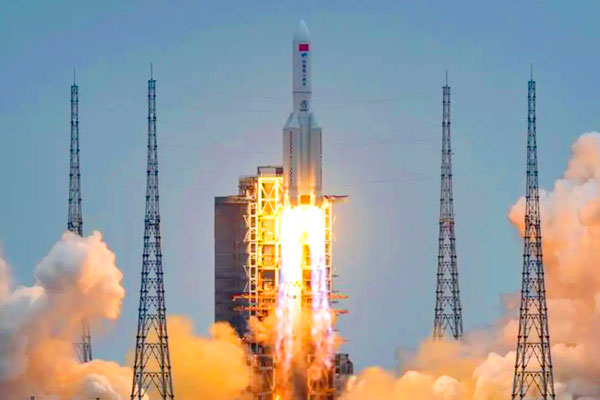
A very unique state capitalism
It is important to remember that when the Chinese Stalinist bureaucracy embarked on the process of capitalist restoration, they studied very carefully the chaotic way in which the USSR was dissolved. Unlike the CPSU, the CCP leadership decided to pilot the dismantling of the planned economy by protecting its interests at all costs, and resorted to maintain strong centralisation and a powerful state sector. Party and state continued to merge, albeit as tools in the service of capitalist accumulation.
China benefited from massive Western capital investment throughout the 1990s and into the 21st century. Massive factory relocations in the US and Europe provoked a remarkable change in the global division of labour. Hundreds of millions of new proletarians emerged in Chinese cities from rural areas. Low wages and long hours were essential to increase the competitiveness of Western firms and their profits. But this process, which clearly advanced Chinese productive forces, had other consequences.
Both the Chinese bureaucracy and bourgeoisie took advantage of rapidly maturing favourable conditions to compete with the great powers. The huge amount of capital at their disposal, thanks to the trade surplus, allowed them to cover their raw material supply needs and to invest millions around the globe. Latin America, Central America, Africa and many Asian countries are increasingly dependent on Chinese purchases and credits.
However, to this day, and this is a fundamental aspect, the ex-Stalinist and pro-capitalist nomenklatura, which controls the state apparatus, continues to set economic policy and tries to discipline those oligarchs, compulsorily affiliated to the CCP, who jeopardise its authority and the stability of the system. The bureaucracy and the new bourgeoisie form the same ruling class, but within them there are obvious contradictions and divergent interests that are being resolved abruptly. The bureaucracy does not want to let go of the helm of command, and this makes clashes inevitable.
In the bourgeois regime, economic power decides on all matters of substance and shapes the state apparatus according to its needs. But this does not exclude that in certain historical circumstances of revolution and counter-revolution, the ruling class will cede to a Bonapartist, military or fascist caste the direct management of its interests, including economic ones, at considerable cost. This happened in Nazi Germany and Fascist Italy.
Even in the USA, during the New Deal years, the Roosevelt government had to discipline some big monopolies that were trying to unleash a veritable civil war against the labour movement, and it did so in order to save the stability of the system as a whole. By enlisting the support of the trade union bureaucracy and the Stalinists, he managed to contain the workers' unrest of those years (1934-1937) and to prepare for American intervention in the Second World War.
The difference with China is that the present regime of state capitalism was born from a powerful bureaucracy that ran a deformed workers' state, and it is the same bureaucracy that is at the head of the administration, deciding on the fundamental affairs of the country and, although it shares the resulting benefits with the bourgeoisie and a growing elite of billionaires, it is jealous of its powers and has a fierce instinct for self-preservation. This objective contradiction has not yet been resolved and has to be considered as a moving factor, because it will fuel strong conflicts in the future.
The dismantling of Alibaba, one of China's leading multinationals, and the disappearance for months of its founder and chairman, Jack Ma, once China's richest man, is a clear example of this. The company was about to stage the largest IPO in history ($34.5 billion) until it was suspended by the Chinese authorities. Jack Ma had built up a financial empire, a veritable shadow bank, which could jeopardise the stability of the country in the event of a suspension of payments. Along with Alibaba, other major technology companies have also been fined, such as Tencent and recently Didi, which was listed on Wall Street, on the basis of a new "anti-monopoly" regulation approved in November 2020. The possibility that these companies could become a bridgehead for US interests also weighs on the government's withering reaction. (7)
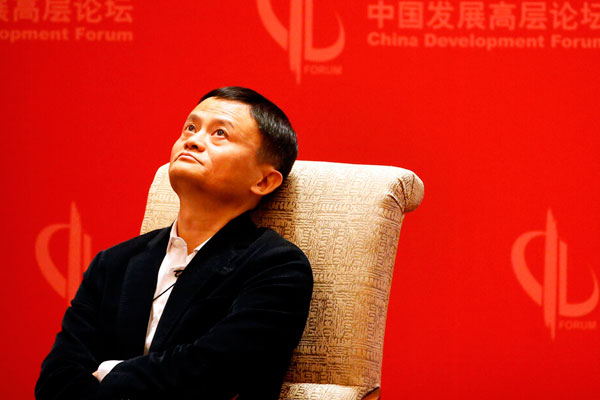
The Chinese regime understands the importance of internal stability. The plutocracy has grown very large. Billionaires such as Zhong Shanshan, owner of the bottled water company Nongfu Spring, with a wealth of more than 70 billion dollars, or the nine owners of the country's car companies who have increased their global fortune by more than 22 billion since July 2020, or those who control the renewable energy sector, are a reminder that social inequality has skyrocketed.
But when we look at the Asian giant, we see class relations that are different from other parts of the world. The transformation in recent years has been remarkable. In 1990, the US and Western Europe accounted for three quarters of the world's middle class despite representing one third of the total population. As of 2018, it is China that concentrates almost 50% of the new middle classes, while they have suffered a process of impoverishment and proletarianisation in the advanced capitalist countries. (8)
Between 2008 and 2019 real wages doubled in China, to the point that in 2016 they surpassed those of the largest Latin American countries and some EU countries, such as Romania and Bulgaria. The average hourly wage in Chinese industry tripled between 2005 and 2016, reaching $3.60; in the same period, the industrial sector wage in Brazil fell from $2.90 to $2.70 and in Mexico from $2.20 to $2.10.(9)
The logic of "get rich", proclaimed for decades by the CCP leadership, has permeated society and has been transmitted to the consciousness of vast sectors of the population. But the enormous growth of inequality has forced the regime to resort to demagogy and repression in an attempt to maintain significant social support. In a 2020 speech, Premier Li Keqiang claimed that some 600 million people lived on a monthly income of only 1,000 yuan ($154).
Since Xi Jinping came to power, economic and political recentralisation has increased considerably, as have the propaganda coups aimed to "discipline" the new Chinese bourgeoisie. Numerous businessmen, all party members, have been purged and trialed under the pretext of corruption. These manoeuvres have been combined with the intensification of nationalist discourse, as we have seen in the recent celebration of the CCP's centenary and the offensive on Taiwan.
Despite the authoritarian nature of the state, the overexploitation of the workforce and the appalling environmental destruction, the Chinese regime currently enjoys more domestic support than any of its competitors. This is undeniable, and has been clearly seen in the absence of solidarity mobilisations with the movement in Hong Kong, partly because of the politics of the so-called "democratic opposition" which has thrown itself into the arms of US imperialism, but also because of the response to the pandemic and the sustained rates of economic growth.
But the relative internal stability enjoyed by the Chinese regime does not prevent the growth of explosive contradictions at the base of society. Despite the formal improvement in working hours, wages, pensions, etc., the over-exploitation of workers remains a strategic line in the process of capitalist accumulation.
Officially, the working day by law is 40 hours a week, with a maximum of 3 hours overtime a day, with a ceiling of 9 hours overtime a week and not exceeding 36 hours overtime a month with two days off a week. But the reality is quite different: all these limits are exceeded, but the penalties for violations are so low and so difficult to enforce that the right of Chinese workers depends exclusively on the companies. The unwritten law of a 9-9-6 working day (nine in the morning to nine in the evening, six days a week) is the rule in a large number of companies and sectors.
The official trade unions (ACFTU), despite 230 million members, are dependent on the regime and subject to company initiatives. China has never ratified international conventions on freedom of association, collective bargaining and the elimination and abolition of forced labour. Officially the right to strike has been abolished since 1982.
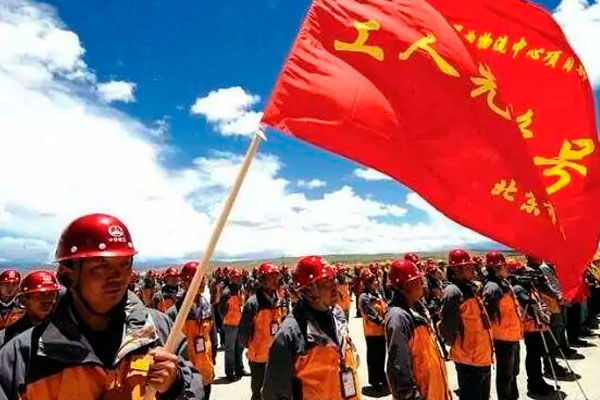
Despite these obstacles, class struggle has not been eliminated in China. Between 2015 and 2018, there was a significant escalation of labour mobilisations. In 2016, China's Ministry of Human Resources and Social Security recorded 1.8 million labour disputes, an increase of 118% compared to 2015.
Despite the extreme collaboration of the official trade union federation ACFTU with the ruling class, there have been unofficial strikes which have overwhelmed the bureaucracy and showed significant revolutionary potential. One example was the strike by workers at the Jasic factory in Shenzhen in 2018, in Guandong province, which is considered the model of liberal capitalism and privatisation in China. The strike was supported by a People's Solidarity Committee, whose activists became victims of harsh government repression, accused for their Marxist and "Maoist" orientation.
The resort to raising the banner of "Maoism", especially among sections of the youth and students, also expresses in a distorted way the search for the genuine ideas of Marxism in the face of the ideological fraud of the official Communist Party which heads the state capitalist regime.
China will not be able to avoid indefinitely the social upheavals that the rest of the capitalist powers are suffering. Simultaneously with the rise of Chinese imperialism as a new world power, the Chinese proletariat will be an important ally in the struggle of the international proletariat.
The case of Russia is illustrative in this respect. Putin's regime has benefited in the last two decades from rising commodity prices and the lack of political opposition. But in recent years it has suffered from the economic and social crisis that the country is experiencing, and the hardening of repression has not brought more support. The mobilisations unleashed after Navalny's imprisonment are indicative of growing discontent, as is the United Russia's reversal in the Duma elections and the rise of the Communist Party. Political developments in Russia in the coming period may produce large-scale mass movements.
The struggle for hegemony sharpens
In China, economic imbalances have been temporarily alleviated by state investment plans that are unparalleled in any other country, but public and bank debt is growing at a very fast pace, as are the risks of bankruptcy of large companies linked to the real estate sector, where the speculative bubble is out of control and can burst with very negative effects. (10)
On the other hand, the obligations that the imperialist regime in Beijing is contracting every day as a world superpower have very clear consequences: it will have to deal with major political and military challenges, and its competitive advantages will inevitably diminish as the economic recession deepens.
The battle between the two great powers has entered a new phase. It is precisely the defeats that US imperialism has suffered what are pushing the White House to deepen the fight. The stakes are too high and have implications not only for the external power of the USA, but also for the very future of capitalism within its borders. The conflict between the two powers for world hegemony will escalate with unforeseeable consequences for the economy, for international relations - including new regional and local wars - and will inject more fuel into the class struggle.
Chinese capitalism is in a period of ascendancy and the effects of the current crisis among its competitors will probably allow it to climb even higher. But it is not alien to crisis. It is necessary to underline that this is not a virtuous capitalism capable of overcoming its contradictions. No country, no national economy, no matter how powerful, can decouple itself from the world market and its organic crisis in this epoch of imperialist decline.
Despite China's role, the metastasis affecting the global economy has continued to worsen. As Marxism explains, the anarchic character of capitalist production driven by blind market forces and the individual will of profit means that sooner or later capitalist accumulation will run up against objective limits. Although Chinese economic muscle helped in the 2007-2008 crisis to avoid a complete collapse, it did so on the basis of creating new contradictions and fueling overproduction.
The G7 powers, at their last summit, issued a communiqué directly targeting China for its "harmful industrial subsidies, including those leading to severe overcapacity, [and] a lack of transparency regarding the role of the state in the economy". China currently produces 53.3% of the world's steel and 57% of the world's aluminium, and according to the West its policy of state subsidies contributes to "depressing prices, undermining profitability, generating damaging trade distortions, creating regional imbalances, and destabilizing world trading relations." (11) The communiqué ends by raising the need for action against illicitly subsidised overcapacity, i.e. against China.
But what the European and US bourgeoisie is hiding is that overproduction is widespread throughout the world. The world steel industry, already suffering from overcapacity before covid-19, has increased its production in 2020 by 1.5% and in the case of China by 5.2%. The OECD estimates the overproduction at 704 million tonnes, of which China accounts for 16%.(12)
The race between China and the US for economic hegemony means that trends towards overproduction are reinforced, increasing imbalances. As Lenin explained: "the capitalists do not divide up the world because of their particular wickedness, but because the degree of concentration they have reached compels them to go down this road in order to make profits; and they divide it up in proportion to capital, in proportion to force, because any other procedure of division is impossible in the system of mercantile production and capitalism."(13)
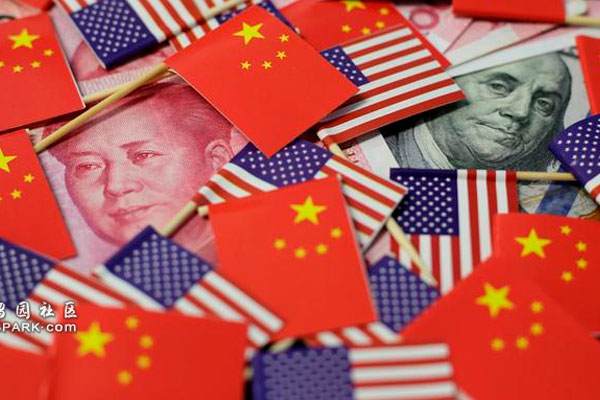
Chinese imperialism is becoming more and more overbearing, and for good reason. One of the results of the covid-19 crisis is that it has exposed China's strength in controlling sources of raw materials and supply chains,(14) something that is seriously affecting US and European industry.
The same can be said of international trade: in November last year, China scored another victory with the Regional Comprehensive Economic Partnership Agreement, signed by 15 countries in the Asia-Pacific region. Its members total more than 2.2 billion people, account for about a third of the world economy and a combined GDP of some $26.2 trillion in the world's fastest growing region. A good response to the trade war unleashed by the US: China already exports more to Southeast Asia than to the US or Europe .(15)
In Africa, Chinese investments grew by 43% between 2014 and 2018, while those of the US fell by 30.4%, those of Great Britain by 26.9% and those of France by 11.7%. This is a key continent in terms of mineral reserves and raw materials for the development of emerging industries such as electric cars. One of these is cobalt: 50% of the mines in the Democratic Republic of Congo, which has 52% of the world's reserves, are owned by China.(16) Moreover, the Asian power has more than 80% of the world's cobalt refining capacity.
Its dominance of critical raw materials (cobalt, germanium, beryllium, etc.), fundamental in the emerging industries of renewable energies -China manufactures two thirds of the world's photovoltaic solar panels compared with just 3% in the US-, robotics, batteries, drones and smartphones, has led to the dominance of the Shanghai Metal Exchange over the London Metal Stock Exchange. China is the world's largest producer of such raw materials and also the world's largest importer: "Even when they extract from alternative deposits, most of the processing is done in China before they are exported again," says Hans Günter Hilpert, director of the Asia Research Division of the German think tank SWP. (17) In the same vein, China has recently become the world's largest oil refiner, ahead of the US. (18)
Another factor points to the profound change underway. In 2020 the EU became China's largest trading partner, with its exports increasing by 2.2% and its imports by 5.6%, while with the US they decreased by 13.2% and 8.2% respectively. The China-EU goods train, part of the New Silk Road, has already recorded more than 40,000 journeys carrying $200 billion worth in goods, proving crucial in maintaining supply chains during the pandemic.(19)
China's cross-border mergers and acquisitions, especially in Europe, have increased by 268% in 2020, and it leads for the first time in patent filings in Europe, ahead of Germany and the US.
Europe is increasingly caught between China and the US. Whereas 20 years ago the old continent still accounted for a third of global production, that percentage has now fallen to 15%. That explains the polarised position of its leaders, meeting one week with Biden to condemn China for its lack of respect for human rights, only to meet with Xi Jinping the week after and argue that alignment with the US vis-à-vis China "would be counterproductive".
The US attempt to regain lost positions is therefore not a dream of Trump and the extreme right-wing sectors of the Republican Party, but an imperative necessity of the American bourgeoisie. Biden has maintained the same nationalist discourse and hostility towards China, approving new measures such as the ban on investing in 59 companies linked to the Chinese defence industry, including Huawei. The 6 trillion dollar plan announced by the Biden administration, and the section that has been approved with the support of the Republicans dedicated to modernising US infrastructure, is part of this economic war.(20)
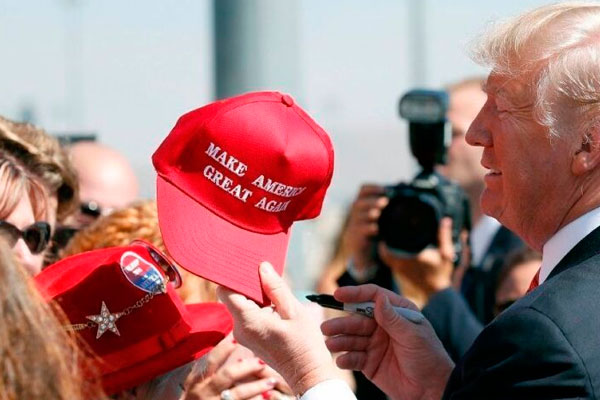
The US's decline in the quality of its infrastructure is a good reflection of its economic decline. Whereas in 2002 it was ranked fifth in the world in this area, by 2019 it had fallen to thirteenth place, with a grade of C- according to the American Society of Civil Engineers. In the same period, public investment in infrastructure fell from 2.7% of GDP to 0.7%. The Council on Foreign Relations noted in a report in April this year: "US infrastructure is dangerously overburdened and lagging behind that of its economic competitors, particularly China". Hurricane Ida recently caused power system collapses, as also happened inTexas on February this year after an unprecedented winter storm, and cyber-attacks have crippled strategic infrastructure such as the Colonial Pipeline in May this year, which supplies power to most of the US East Coast. (21)
The military aggressiveness displayed by Biden is nothing short of Trump's. The Democrat-led White House has just presented the largest military budget in history for next year: $753 billion, including $24.7 billion for nuclear weapons. The prospects could not be further from stability and good neighbourliness. The tone is increasingly aggressive.
In mid-September the struggle between the two great powers took a new step forward with the signing of a strategic security agreement between the US, UK and Australia to secure their interests in the Indo-Pacific region. The agreement will include plans to achieve greater integration of common initiatives in defence-related research, technological and industrial development and, as a first step, will enable Australia to equip itself with state-of-the-art nuclear-powered submarines. In the coming weeks, Biden is likely to try to draw Japan and India into the initiative. Kamala Harris's recent tour of Southeast Asia was no doubt intended to prepare the ground.
For the moment, pending Beijing's response, the first major casualty of the deal has been France, which is losing out on a $50 billion contract to renew Australia's submarine fleet. A fact that contributes to further cracking the EU's alliance with US imperialism and that has raised tensions with Macron calling the US and Australian ambassadors for consultations.
China has responded immediately, stating that such an agreement poses a threat to its national security. Over the past year, China has continued to increase pressure on Australia by imposing tariffs on key industries such as coal, barley and wine, and by reducing its investments in Australia by 27 per cent. Australia's economic boom in recent decades has been conditioned by the exponential increase in its exports of raw materials and products to China. More than 40% of its trade is with China, compared to less than 30% with OECD countries, which means that the Australian government faces serious economic difficulties in the coming period, which will result in an intensification of the class struggle.
Taiwan has become a focus of growing tensions between the US and China. The CCP has increased pressure on the "renegade province" in recent years, sending fighter jets into Taiwanese airspace in recent months and beginning construction of a tunnel to the island.
Although a direct military confrontation with the US puppet regime in the near future is unlikely, the US and its allies can use the Taiwanese issue as the basis for a more aggressive policy in the coming years, especially given the strategic importance of Taiwan and the South China Sea in the Pacific region, where the US has increased its presence in recent years in preparation for a more direct confrontation with China. It should not be forgotten that Taiwan is not a Third World country, but amasses strategic industries, such as semiconductors and important electronic products, especially on the West Coast, which are central to global capitalism and the interests of US imperialism.
Public debt, speculation and financial parasitism
The deep crisis unleashed after the outbreak of the pandemic is the expression of all the contradictions that have been building up since the great recession of 2007-2008. At that time the huge amounts of public money mobilised to save finance capital and the big monopolies prevented a total collapse. The same can be said now!
International social democracy, and its friends on the new reformist left, are trying to present the government's response in 2020 as radically different from that of 2008. They dare to speak of a new "paradigm", of "Keynesian" measures and the end of neoliberalism. But facts deny these claims. Subsidised furloughs and lay-offs, temporary plans against evictions, or direct aid for families, completely insufficient, have been activated, but does not change the background of the strategy of the bourgeoisie. The more than 12 trillion invested by the central banks and the capitalist governments to face the depression is a new and gigantic bank and corporate bailout.
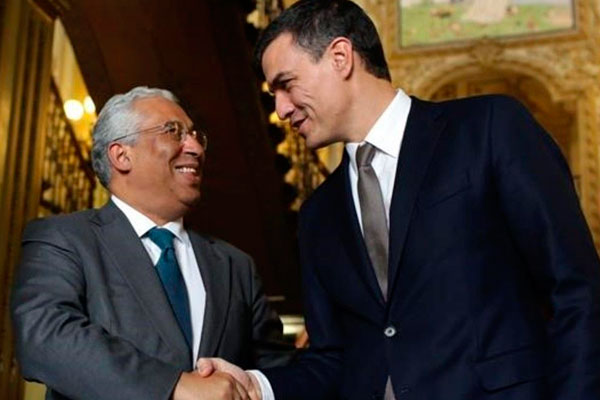
The year 2020 was a much deeper economic debacle than the one experienced in 2007-2008. The capitalist institutions had to acknowledge this, but at the same time launched a vast propaganda campaign claiming that a V-shaped recovery would immediately follow. Reality has challenged this mountain of lies.
The World Bank (WB) forecasts that 2021 will end with global growth of 5.9%, driven mainly by a rebound in China (8.5%) and the US (6.8%). European Union with 4.2% and Japan with a meagre 2.9% are far behind. Growth, however, is "3.2% below pre-pandemic forecasts". Even in the best scenario, major risks and uncertainties remain, making the economic situation extremely volatile: "A more persistent pandemic, a wave of corporate bankruptcies, financial tensions or even social unrest could derail the recovery process". (22)
A critical point is emerging or developing countries. The WB notes that "gains in this group of economies are not sufficient to recover the losses experienced during the 2020 recession and output in 2022 is projected to be 4.1% lower than projected before the pandemic... By 2022, the per capita income losses recorded in 2020 will not have been fully reversed in about two-thirds of emerging market and developing economies".
One of the reasons for this situation is the uneven vaccination process around the world. Eighty per cent of vaccines are monopolised by a handful of rich countries. While this privileged club of nations has completed the pattern for 70% of the population, among the poorest countries it is no more than 2%. (23) A situation that puts global economic recovery at risk, because of the possibility of the emergence of more lethal and contagious variants, as has already happened with Delta. Although the technical and scientific means to end the pandemic exist, the power of the big pharmaceutical monopolies and their stratospheric profits are preventing millions of lives from being saved.
Another factor that is becoming increasingly important for the living conditions of the population and the world economy is the devastating effects of climate change. According to a study by the Swiss Re Institute, a 2 degree rise in temperatures - the supposed target the Paris Agreement aims to avoid - would mean a drop in global GDP of 11%; with a 2.6 degree rise the drop would be 13.9% and if temperatures were to rise by 3.2 degrees the collapse in global GDP would be 18.1%.(24)
When the ruling class talks about controlling the situation, it is enough to quote the growth of public, corporate and household debt to see how they are lying. In 2020 alone, global indebtedness increased by another 30 trillion dollars to 289 trillion dollars, 360% of world GDP. This immense dead weight will put governments on the ropes in the coming period.
According to data from the International Institute of Finance (IIF),(25) the increase in average public debt in advanced economies during the pandemic has jumped from 110% to 135% of GDP. In 2007, before the subprime bubble burst, it represented only 46% of GDP. In the case of emerging economies, the figures are just as worrying, with public debt rising by 600 billion, from 52% to 60% of GDP compared to 28% in 2007.(26)
Against this background, the IFF warns of the need for fiscal reforms and deficit adjustments, i.e. further cuts and austerity, but acknowledges the serious difficulties that governments may face: "While sizeable budget deficits have been central to coping with the crisis, finding the right exit strategy may be even more difficult than in the 2008 and 2009 crisis. Political or social pressure may constrain governments' efforts to reduce deficits and debt, putting at risk their ability to cope with future crises." (27)
In the case of the US alone, corporate debt has reached 11.2 trillion dollars, 50% of GDP, and household debts of 14.6 trillion dollars, with 10 trillion dollars in mortgage debt and almost 2 trillion dollars in college debt. The Federal Reserve (Fed), which is injecting $120 billion into the economy each month, has doubled its debt in 2020 from $2.25 trillion to $4.59 trillion, with the expectation that at this rate it could reach almost $9 trillion by the end of this year.
The stimulus provided by the Federal Reserve to save Wall Street has accounted for 20% of US GDP. To this must be added the CARES and COVID Relief laws promoted by the Trump administration, which accounted for nearly 14% of GDP, and the new plans approved by the Biden administration, which could amount to as much as 6 trillion dollars. In total, the bailout of the US economy, i.e. of the big monopolies and finance capital, amounts to 40% of US GDP.(28)
The same applies to the EU. Adding the Pandemic Purchase Programme (PEPP) and other stimuli, the ECB's debt now exceeds 7 trillion euros. Germany's and Italy's aid to their banks and large companies has reached 30% of their GDP; in the case of Spain it is 20%, and in France and the UK around 15%. The UK government's Office for Budget Responsibility has pointed out that we are facing "the biggest fiscal risk in peacetime [that] will leave a horrible legacy for public finances", noting that the massive injection of liquidity "was almost ten times the level of support provided during the financial crisis... but public debt is around three times higher than it was in 2008".
In China, despite its enormous economic muscle, public, corporate and household debt has risen since 2008 from 140% to 280% of GDP. One of the main reasons for this is the growth of so-called "shadow banking", which now accounts for 86% of Chinese GDP and 29% of the country's banking assets. But its competitors are not much better off: global debt in the US is 286% and in the eurozone 283%.(29) According to the Financial Stability Board,(30) at the end of 2019 shadow banking accounted for 49.5% of the global financial system, with the US accounting for 30%. (31)
This unbridled growth of public indebtedness - the flip side of which is the criminal austerity policies - has in turn generated an extraordinary speculative bubble.(32) The mountains of liquidity put at the service of big capital have not led to any vigorous recovery in the rates of productive investment, but have put into circulation a volume of fictitious capital unprecedented in the history of capitalism, which boosts stock market profits beyond the real sales of companies, and contributes to another phenomenon that is already wreaking havoc: inflation.
The IMF itself pointed to "a striking divergence between financial markets and the real economy: financial indicators show better prospects for recovery than can be deduced from real activity". Tesla, for example, with revenues up 5% and cash flows up 20%, increased its share price by 750%.
In the US, the S&P 500 stock index has been breaking records for months, and in the first four months of 2021 achieved average earnings per share (EPS) for listed companies of $39.7, the highest in history. In the third quarter, it is expected to surpass this, reaching $50 per share. This growth is fuelled by purely speculative share buybacks. Goldman Sachs predicts that "the repurchase of 726 billion dollars in shares will push the S&P 500 to 4,700 points". (33) After the lows recorded in March 2020 with the outbreak of the pandemic, the S&P 500 has rallied 100.2%, the Nasdaq 100% and the Dow Jones 91.6% in 2021.
We are faced with the same formulas as in the previous economic crisis, and again we hear the neo-Keynesian economists pointing to the need for credit and liquidity injections to flow to the productive sector. But why go through the productive process when central bank and government policy makes it possible to make bigger, easier and faster profits through speculation in debt, bonds or shares?
As Lenin explained, in the epoch of capitalism's organic decay "the bulk of the profits go to the geniuses of financial intrigues. These machinations and rackets have their basis in the socialisation of production; but the immense progress of mankind, which has led to this socialisation... benefits the speculators." (34)
Financial capital, further strengthened by the injection of liquidity by the central banks, has become more omnipresent and parasitic, without any barrier having been put up to prevent it. (35) A process which runs parallel to a concentration and monopolisation of capital to a degree never seen before.(36)
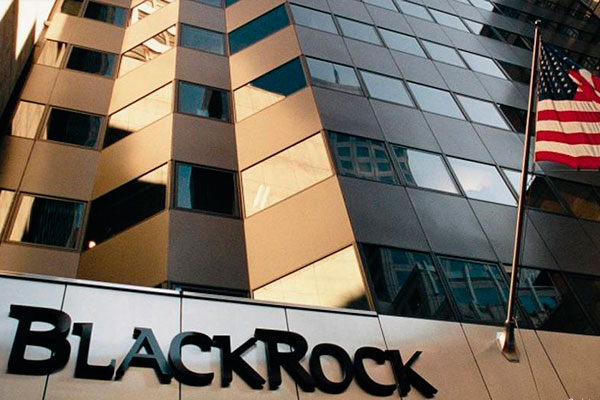
Big finance capital is interwoven as a whole with the bourgeois state and the big financial institutions, acting as managers and consultants to the Federal Reserve or the ECB in their asset purchase policies, a circular business in which they are both judge and party. (37) The state does not come to the aid of finance capital, but is a springboard for it to accumulate capital and guarantee its rates of profit: "The monopoly of the state in capitalist society is merely a means of raising and guaranteeing the incomes of millionaires on the verge of bankruptcy in this or that industry." (38)
The speculative orgy is driving inflation in numerous sectors. The existence of hundreds of billions of idle dollars that are not used for productive activity puts pressure on those sectors where demand is assured. This is the case in the real estate sector, where large investment funds and banks dominate the rental and property market, causing permanent rises. Or with electricity, whose prices soar not because production costs are rising, but because of the monopolistic control of the sector after decades of privatisation of this fundamental service. The same is true of other sectors, such as gas or agribusiness, or education and health.
The threat of stagflation (stagnation plus inflation) is not a distant hypothesis; it is already knocking at the door of the global economy. In the US, prices have climbed to 5.4%, the highest rate in 29 years. In China, industrial inflation hit a new record high of 9% in July, the highest in more than a decade, and could lead to a general rise in prices around the world. In the case of the EU, inflation stood at 2.2% in July, the highest since 2018.
In this dynamic, rising food prices have tremendous social consequences. The FAO notes that from May 2020 to May 2021 the increase in food prices has been 39.7%, the highest since records began. Cereals rose by 36.6%, vegetable oil by 124%, dairy by 28%, meat by 10% and sugar by 57%. The FAO's food price index stood at 127.4 in August, close to its record level of 137.6, reached in 2011, which was one of the spurs for the outbreak of the Arab spring.
The IMF has indicated that prices could continue to rise by up to 25%, which together with the covid catastrophe will provoke a new epidemic of hunger in the world. The latest UN report states that the number of people who will suffer directly from hunger has increased from 650 million in 2019 to 811 million by the end of 2020 (10% of the world's population), rising to 21% in the case of Africa. 2.3 billion people will be food insecure, 30% of the world's population!
Many media reports point to ecological disasters as the cause of these increases. Obviously, one of the reasons for the fight against climate change is to preserve the fertility of the earth and to ensure sustainable food production to feed the entire population. However, this approach hides the fact that the fundamental problem is not climate change, but speculation and the capitalist mode of production itself. The latest work by the World Wide Fund for Nature (WWF) and Tesco (39) points out that 40% of the world's food production, 2.5 billion tonnes, is wasted. These losses are greatest in industrialised countries, accounting for 58% of the total. If there is no profit, capitalists prefer to let products rot.
Supply chain disruption and "stock-outs".
Another relevant aspect of the current situation is the rise in the prices of oil, gas, steel, copper, aluminium, and other raw materials essential for industrial production, such as semiconductors. The World Bank points out that prices have doubled and tripled, in some cases reaching the levels forecast for 2035 (since January, the price of Brent crude has hit a three-year high of $83.67 per barrel).
Inflationary tensions are due to a combination of factors: financial speculation that diverts large flows of capital to the monopolistic energy companies, and which is fed by the Central Banks' bailouts and "stimulus" plans; the significant increase in demand for consumer goods after the collapse suffered during the pandemic; the hoarding of stock and containers by the large multinationals to increase their rate of profit during this global upturn. The high tariffs encouraged by the trade war between the US and China, and the Beijing government's decision to withhold essential raw materials to shield its industrial and commercial muscle, are also fuelling the price spiral.
In recent months there has been colossal pressure on the supply chain, itself conditioned by just-in-time organisation after years of economic globalisation and socialisation of production on an unprecedented scale. And this has had obvious consequences, making it extremely difficult to replenish stock at the pace demand is requiring. The production of industrial components of all kinds, semiconductors, raw materials, etc., key to the automotive industry, machine tools, white goods and electronics (consoles, computers, latest-generation mobiles, etc.) has been hard hit, causing temporary shortages and months of waiting for many of these products to be delivered.(40)
The advantages of globalisation also show their limits. New communication technologies and the exponential development of internet commerce, together with the cheapening of means of transport, generated a real revolution with the formation of global value chains, which are now affected by the gigantic distances that both components and goods must travel to reach factories and points of sale.
In any case, it should be noted that this upturn in consumption, which has led to a hysterical campaign about the supposed hecatomb of shortages that could occur during the Christmas shopping season, affects those sectors of society with strong purchasing power, especially the middle classes, which account for the bulk of available savings. But we cannot consider this as a fundamental trend, not even sustainable in the medium term, which would allow us to overcome the long period of capitalist stagnation.
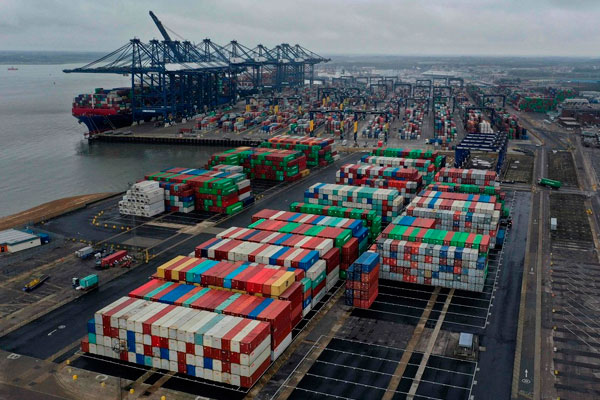
As the latest report by the Organisation for Economic Co-operation and Development (OECD) published on 8 November indicates, during the spring there has been a generalised collapse in household incomes despite the upturn in Gross Domestic Product (GDP). According to the study, in the OECD countries the decline was 3.8%, with the US leading the fall in per capita income with a drop of 8.35% (in other countries the decline was also significant, Greece -4%, Hungary -2.7%, the Netherlands -2.1%, Ireland -1.4% and Spain -1.17%). (41)
NOTAS
1 François Chesnais, La originalidad absoluta de la crisis sanitaria y económica mundial
2 In January 2021, there was a first outbreak, which ended with just 2,000 infections, producing the first death from covid-19 since May 17, 2020. On January 7, 2021, the Chinese city of Shijiazhuang, with 11 million, was in quarantine after detecting 117 infections. In the first 24 hours, more than 6 million PCR tests were carried out and 40% of them were analyzed, classes were suspended and the train, bus and airport stations were closed.
3 China deja atrás a Occidente en la cuarta revolución industrial
4 Pandemia en la India: caos, devastación y barbarie capitalista
5 This is how the Atlantic Council (an American think tank founded in 1961) reflected the crisis in the semiconductor market in one of its latest reports: “The recent shortage of semiconductors was a wake-up call for the US economy as US policymakers realized around 75 percent of the world’s semiconductor production is taking place in China and a few other economies in East Asia. Furthermore, more than 90 percent of the world’s most advanced semiconductor capacity is located in one economy – Taiwan – whose sovereignty is frequently threatened by China. This has encouraged the European Union and the United States to seriously contemplate expanding their semiconductor manufacturing capacities. A report by Boston Consulting Group highlights the need for government incentives to promote private investments in the semiconductor industry. The report estimates that $50 billion in government-funded incentive programs over the next ten years would be a good starting point for the US government to gradually reestablish the United States “as an attractive location for advanced semiconductor manufacturing”.
6 China deja atrás a Occidente en la cuarta revolución industrial
7 This was explained by an analyst linked to the Chinese Government in the Global Times: “The State cannot allow [tech companies] to become legislators for the collection and use of personal information. Standards must be in the hands of the state to ensure that those giants exercise restraint in collecting personal information. Especially for companies like Didi Chuxing, which is listed in the United States, and its first and second shareholders are all foreign companies, the country needs to have strict information security supervision…both to maintain the security of personal information and to maintain National Security”
8 China ya concentra la mitad de la clase media mundial
9 All the data come from the report Global Wage Report 2018-2019 of the International Labour Organization (ILO)
10 “The most indebted real estate company in the world, the Chinese Evergrande, is collapsing. It is the most indebted firm in in real state in the world, with charges of 305,000 billion dollars, and it is experiencing serious difficulties in dealing with them. Among fears of a bankruptcy that could drag down its sector and leave serious consequences for the Chinese economy -construction is one of its pillars-, this week has already seen two consecutive cuts in its debt rating (...) The company has lost so far this year around 70% of its value. In August, its sales contracts —including those of assets offered as payment to its suppliers— fell 26% compared to the same month last year (...) One of the great doubts regarding the situation of the real estate company is how the Chinese government will respond. If it will come to the rescue, given the size of the company and the possible 'contagion effect', or will it choose to leave a group to its fate which, in the words of the consultancy Eurasia Group, is 'the notorious example of irresponsible management of the debt and misconduct in the real estate market'…”
11 G7 criticizes subsidies driving overcapacity in steel, aluminium
12 Pandemia ocasiona sobreproducción de acero en el mundo
13 El imperialismo, fase superior del capitalismo, V. I. Lenin, edición de la FFE, p. 115.
14 The White House has published a clear report about the weakness of the chains of supply for de US
15 El Sudeste Asiático se convierte en el mayor socio comercial de China
17 Cómo la minería china domina el mercado de las materias primas críticas
18 China supera a Estados Unidos y se convierte en el mayor refinador del mundo
19 La nueva Ruta de la Seda china acaba en Duisburgo
21 El plan de infraestructuras de Biden: qué, cómo, por qué y contra quién
23 In Asia, the most populous continent in the world, the entire vaccination process, apart from China, is very slow. India has only administered the full dose to 10.1% of its population, Thailand to 11.2% or Indonesia to 13.1%. In Latin America, Mexico and Brazil, the most populous countries on the continent, have only administered the full dosis to 26.3% and 28.9%, respectively. In the case of Africa, the situation is dramatic, only 1.8% of the population has the full guideline.
24 This is how climate change could impact the global economy.This same institution calculates that only the insured losses due to natural catastrophes in the first half of the year, excluding the catastrophes that we have experienced this summer, have reached a record of 42 billion dollars.
25 International Management Bank Association
26 La deuda mundial cae ligeramente tras dos años y medio de escalada ininterrumpida
27 La deuda global alcanza un nuevo récord por el impacto de la pandemia
28 El problema del rescate del neoliberalismo
29 ¿Quo vadis, deuda de China?
30 International organization that pursues the efficiency and stability of the international financial system. It was created after the G-20 Summit in London as a successor to the Financial Stability Forum.
31 Global Monitoring Report on Non-Bank Financial Intermediation 2020
32 The CLOs, similar to the subprime and the CDOs, which triggered the financial crash in 2007, have climbed to a trillion dollars (700 billion in the hands of US financial entities). The EU itself is promoting legislative changes in order to create a market for doubtful loans, which with the pandemic could reach the figure of 1.4 trillion euros in 2022: “The objective of the new rules is to support the development of the secondary market for non-performing loans in the EU in order to allow banks to clear their balance sheets of 'bad loans', while ensuring that the sale does not affect the rights of borrowers”.
33 La recompra de 726.000 millones de dólares en acciones impulsará al S&P 500 hasta los 4.700 puntos
34 Imperialismo, fase superior del capitalismo, V. I. Lenin, FFE, p. 49.
35 The world's largest investment fund manager, BlackRock, has increased its wealth during the pandemic by $1.2 trillion to a record $9.5 trillion, trailing only the GDP of the US and China. The fund has its own risk analysis software called Aladdin, which manages assets of more than 21.6 trillion. The three big investment funds in the world, BlackRock, Vanguard and State Street, control 20% of Wall Street, they are the largest shareholders of 40% of all American companies. They also own 20.16% of Pfizer and 21.23% of Johnson&Johnson; BlackRock is the main shareholder of AstraZeneca with 7.69%.
36 The journal Nature, in a recent study on climate change, confirmed to what extent the planet's natural resources, agricultural, mineral, pharmaceutical or any other sector production, have been concentrated in the hands of a tiny handful of large monopolies: four multinationals control 84% of the pesticide market, ten 56% of the fertilizer market, another ten 83% of pharmaceuticals for livestock and only three companies 60% of the seed market. In the mining sector, five multinationals account for 91%, 88% and 62% of world production of platinum, palladium and cobalt, and ten multinationals for 64%, 52%, 50% and 45% of nickel production, iron, copper and zinc respectively, as well as 34% and 30% of silver and gold. 72% of the oil reserves and 51% of the gas reserves are in the hands of a dozen multinational companies, while as many others produce 30% of the world's cement. There are also ten that monopolize 25% of the world production of paper and cardboard, and thirteen that concentrate between 11 and 16% of world fishing and between 20 and 40% of fish reserves. Five multinationals control 90% of world trade in palm oil, three others 60% of cocoa production, ten 40% of coffee production, eight 54% of soybeans, three 42% of banana production and five 48% of salmon production.
37 In 2020, the European Commission chose BlackRock as the main advisor in incorporating "green and social" criteria in finance, that is, to play a decisive role in the distribution of European funds.
38 El Imperialismo, fase superior del capitalismo, V. I. Lenin, FFE, p. 65.
39 Driven to waste: The global impact of food loss and waste on farms
40 Such a strong increase in demand is inevitably followed by a sharp increase in prices, also exacerbated by monopolistic control of key sectors for world trade. The case of maritime transport is very relevant. 80% of the goods consumed in the world reach their destination by sea. And five shipping companies account for 65% of the container ship market.
The growth of container prices is related to this monopolistic control and the rapid increase in demand: according to reports from Container Trades Statistics, trade shipments from Asia to the US in January-August 2021 were 25% higher than the same period of 2019. The ability to unload merchandise in the main ports of the world has also been limited by the continuous port reconversions that have implied the dismissal of thousands of stevedores and the adaptation of unloading to the demands of just in time for reduction of costs. The ability to deal with extraordinary situations like the one we are experiencing now has been significantly reduced, which explains the images of dozens of container ships queuing at the ports of San Francisco and Singapore.
The same can be said regarding road transport, where setbacks in working conditions and overexploitation have generated an aging workforce and a labor shortage that now weighs negatively.
41 According to the consumer survey of the European Commission (EC), the 600 billion euros 'withheld' by families in 2020 are unequally distributed, both at income and age levels. This inequality will prevent the consumption faucet from being turned on with the expected force: "consumers in the top quartiles have experienced large increases in saving, suggesting that their income levels have been largely protected, while consumption fell by fewer opportunities to spend while due to restrictions. By contrast, those in the lowest income quartiles have seen only a very limited increase in their savings."






